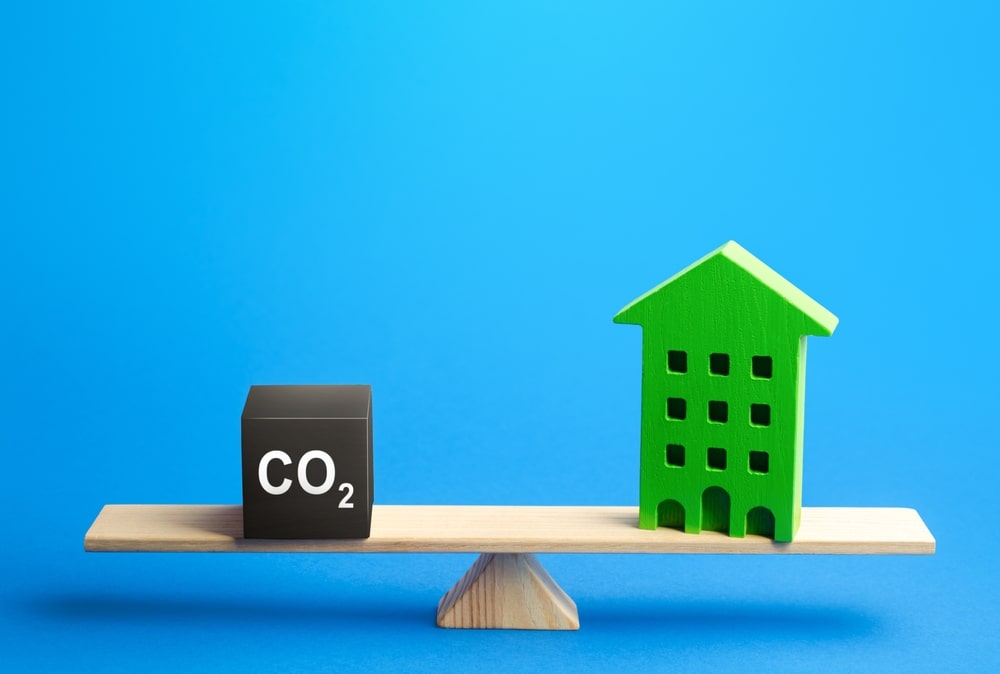News - Construction News
How net-zero architecture is transforming the construction industry

How you can make the most of it.
Encompassing everything from residential buildings to commercial spaces, public communities, and more, the built environment is responsible for approximately 25% of the UK’s total greenhouse gas emissions – a figure that on a global scale, reaches as high as 38%. With the intention of counteracting these troubling statistics, commitments have been made by influential individuals, companies, and governing bodies alike to halve global carbon emissions come the end of the decade – completing the transition to an entirely net-zero economy by 2050.
Despite the promising nature of these intentions, a change of this magnitude requires a shift in the very nature in which the construction industry operates. To this day, however, we remain a considerable way away from reaching these targets, but that doesn’t mean progress isn’t being made. From embodying energy-saving features within the design of the building to minimising waste, utilising green roofing, and more, there is by no means a shortage of environmentally-conscious strategies available across the industry, and Sarah Kauter – managing director of Construction PR – has shared her insight into some of the most notable.
So, what actually is net-zero architecture?
To be classed as a ‘net-zero’ building, the development must be able to offset all emitted embodied carbon throughout the construction phase, but also any further carbon emitted throughout its entire occupation, and until the point of demolition. In the majority of situations, however, minimising carbon production isn’t enough. More often than not, excess emissions will also need to be offset with a variety of renewable technologies, as well as innovative energy-saving design features.
What Net-Zero Strategies can you follow?
Efficient Energy Conservation and Usage
Whilst many of us may instinctively invest in all the latest renewable energy technologies and carbon offsetting solutions, without a doubt, your first point of call should always be to ensure that in its current state, the development is already operating at peak efficiency, and that if it is yet to enter the construction phase, its design minimises any excess and unnecessary energy usage.
In many homes across the nation, one of the simplest, yet most effective ways of ensuring this is the case is through the refresh of insulation located within the walls, floors and ceilings of the property. Not only does this look to enhance heat retention and therefore minimise the need for non-renewably-powered heaters, but it also works to keep the building cooler throughout the summer months. If you’re looking to take this one step further, however, and bring your building closer towards the point of net zero, biomaterials such as mycelium-based compositions offer a sustainable, low-carbon solution to traditional carbon-intensive insulators.
Optimal Building Orientation
Whilst it might be tempting to invest in all the latest sustainable techniques and technologies from the get-go, more often than not, it’s the little changes which hold the greatest influence. In fact, something as simple as ensuring the building is orientated correctly has a significant impact on these devices’ operational efficiency. Solar panels, as an example, operate at peak efficiency when southwards facing, at an elevation of between 30º and 40º. Also, additional factors such as natural lighting and shade should be taken into consideration throughout the design phase, with both considerably influencing a home’s total energy usage. Lighting, for example, accounts for between 17% and 20% of an average building’s energy consumption, so addressing these factors within the design stage – incorporating large, double-glazed windows, as an example – looks to bring us one step closer towards a net-zero nation.
Renewable Technology
Especially when considering the UK’s distinct lack of good weather, it might seem surprising to hear that solar panels are our nation’s most commonly used source of renewable energy. It’s true, and the typical home system prevents more than a tonne of carbon dioxide from entering the atmosphere each year. A more perilous challenge, however, is tackling the UK’s heating situation, where approximately 85% of all UK homes’ heating systems are powered by gas. Fortunately, the installation of gas boilers into new homes is banned from 2050 onwards, leaving low-carbon heating systems such as Ground Source Heat Pumps (GSHPs) as the frontrunners to replace them.
Outside of urban environments, however, or in properties with large open spaces, biomass-fuelled central heating and hot water systems offer another renewable source of heat energy. Biomass burning involves the burning of wood, plants, and other sources of organic material to fuel the building’s heating requirements. Whilst this process does produce carbon dioxide, it is at a quantity lower than what is absorbed throughout their lifetime; assuming new seeds and saplings are replanted in their place, this makes biomass burning entirely sustainable!
In what others ways can your business benefit?
Everybody knows that the relationship between embodied carbon and global warming is no secret, and whilst the chief goal of transitioning towards a net-zero economy should always be its environmental impact, that doesn’t mean there aren’t other ways businesses could benefit in the lead-up to 2030 and beyond. Predominantly, the early adoptions of these sustainably-focused strategies enable you to develop a significant competitive advantage within the industry concerning the topic of sustainable construction as a whole.
After all, the market for green building only increasing; in fact, it’s forecasted to reach $563.91 billion in value by 2027. For those businesses already heavily invested in sustainability training, or the installation of renewable technologies such as GSHPs, as a few examples, you’ll be spared the additional time and costs that would otherwise be imposed upon your business as and when regulatory bodies begin introducing tougher legislation across the industry. How you choose to highlight this extensive experience truly makes a difference. Whether you opt for displaying it in a distinct position on your website, or plaster it across your various social media channels, positioning yourself as an industry leader in sustainable construction will be a crucial selling point for the foreseeable future.
If you would like to read more stories like this, then please click here
Related Articles
More News
- UK Introduces New Trade Measures to Support Steel Sector
11 Jul 25
Steel producers across the UK will benefit from stronger trade measures from 1 July.
- Clean energy future to be ‘built in Britain’
10 Jul 25
The Clean Energy Industries Sector Plan comes into force to ‘build it in Britain’.
- Thousands more to get the tools they need to start construction careers
9 Jul 25
Thousands of people are set to benefit from on-the-job training and career opportunities in the






